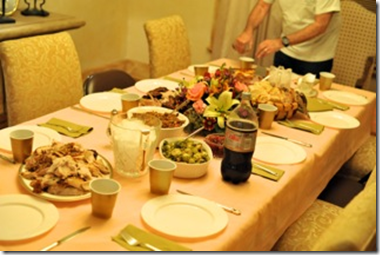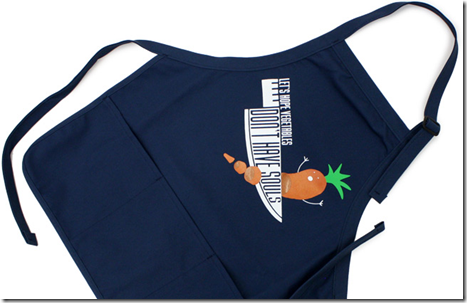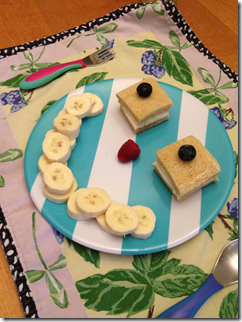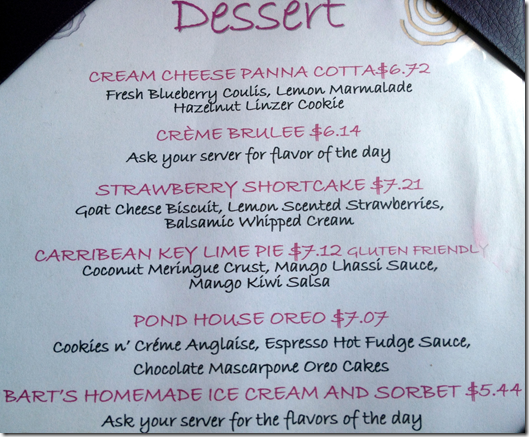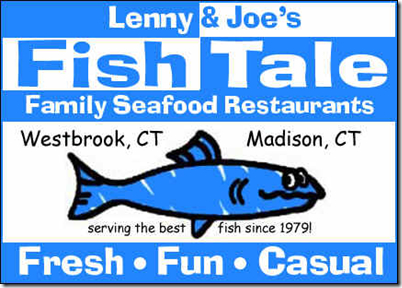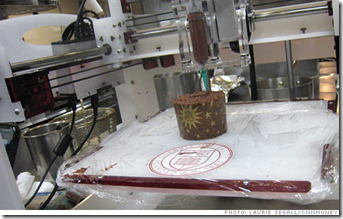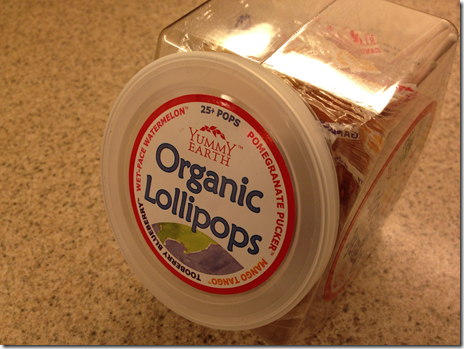Why our Thanksgiving Day table was better than Whole Foods will ever be.
/Like Whole Foods, our Thanksgiving table, located in the home of my brother-in-law’s parents, was piled high with delicious, attractively displayed food.
Unlike Whole Foods, there was also Diet Coke on the table, a product which Whole Foods will not deign to offer its customers.
Best pizza in town, yet I can’t get a Coke to wash it down. It makes no sense and is just one reason why I avoid shopping there.
I prefer my food without the side order of pretention.
Fast food at a glacial pace
/This is both an engineering marvel and one of the most insane five minutes that you will ever see:
The first supper
/Our son, now five months old, has been staring at and reaching for our food for more than a month. Up until now, all of his nourishment has come via breast milk.
In the spirit of Thanksgiving, we served him his first meal tonight.
Rice cereal.
When his sister tried her first meal, she spit it out in disgust, a precursor to her discerning palate.
Charlie’s first experience with real food was slightly different:
Space is suddenly a lot less impressive
/It sounds impressive, but in the end, all you need is a weather balloon, a video camera and a GPS tracker.
And if you don’t require video footage of the historic moment, you only need the balloon and the tracker.
For less than $200, you, too, could be the first person to put a food item in space.
I’d send up broccoli, because that would mean there was one less broccoli here on Earth.
The perfect apron for those who support vegetables by not eating them.
/I’ve cited research that indicates that plants can see and smell and are capable of evading enemies and determining friend from foe.
Apparently I am not the only person with these thoughts.
I want this apron.
Do these prices make any sense to you?
/Look at the prices on this dessert menu. Do they strike you as bizarre?
For example, we ordered the strawberry shortcake, but we could’ve saved 14 cents by ordering the Pond House Oreo instead.
I’m sure there is a perfectly good reason why the shortcake cost 14 cents more.
It’s 14 cents better. Or it contains 14 cents worth of additional ingredients.
Right?
Simian declarations
/I handed my daughter a banana yesterday for lunch.

“Daddy, cut it up! I’m not a monkey!”
As I was cutting it up, she added, “You’re hairy like a monkey! Not me!”
Pop head off before eating.
/About 200 years ago, the lobster was regarded by most Americans as a filthy, bottom-feeding scavenger unfit for consumption by civilized people. Frequently ground up and used as fertilizer, the crustacean was, at best, poor people’s food. In fact, in some colonies, the lobster was the subject of laws—laws that forbade feeding it to prisoners more than once a week because that was “cruel and unusual” treatment.
This is the opening paragraph of Josh Schonwald’s Slate piece that discusses insects as a viable source of nutrition for human beings. As someone who does not like lobster, I love this paragraph. The food that people are willing to pay six dollars a pound to eat, basically as a result of its scarcity, was once considered unfit for human consumption because of the ease by which it could be acquired.
Despite how much you might profess your love for the taste of lobster, taste is not the only factor at work here. If lobster were as plentiful as it was 200 years ago, it would cost a penny a pound and you would be feeding it to your least favorite dog.
Should we be surprised? Name another food that is almost always dipped in butter? If lobster were really so tasty, why would you mask its taste with melted butter?
I love mentioning this fact to lobster lovers and watching their reaction. Some simply ignore my statement entirely, while others attempt to rationalize this unfortunate fact by explaining that the way we prepare lobster today (dropping a living creature into a boiling pot of water) is different than how it was prepared two centuries ago, therefore changing the taste entirely.
Schonwald brings up this fact about lobster (one I first learned year ago in a Bill Bryson book) to point out that attitudes about food can change over time, which is something many people are hoping for when it comes to eating insects.
Schonwald believes that two food sources that strike many as unpalatable—insects and seaweed—could play a critical role in not only feeding the 2.5 billion extra humans expected by 2050, but doing so in a green, climate-friendly way.
Many insects are what you might call superfood—rich in protein, low in fat and cholesterol, high in essential vitamins and minerals like calcium and iron. More important, insects are green super-foods. Bugs are cold-blooded (they don’t waste energy to stay warm), so they’re far more efficient at converting feed to meat than cattle or pigs.
I was once a consumer of insects. As a Boy Scout, I learned wilderness survival training while at camp one summer. Included in my training was the identification and consumption of insects that are nutritionally viable to human beings.
I ate a grasshopper, a cricket, and a large, black ant, which did not taste like a blueberry as promised but was not too bad.
Not only was I required to eat these insects, but I was also required to locate them in the forest and prepare them for consumption.
In the case of crickets and grasshoppers, this meant removing the rear legs lest they trigger your gag reflex on the way down.
In the case of the ants, we were taught to pop their heads off to prevent them from biting on the way down.
It sounds disgusting, but I was a fourteen year old boy at the time, so I loved gross things and was basically an idiot.
Most important, insect consumption was just the tip of the iceberg in terms of my wilderness survival training. In the event of an apocalypse, I am going to kick ass.
And probably eat a lot of bugs.
Thick crust cheesy pizza alive and well
/I found this short video of Dominos delivery routes fascinating but also sadly refreshing.
For reasons that I do not understand, I find myself in a land of thin crust pizza lovers. The thinner the crust, the better. Just locating a thick crusted, cheesy pizza has become a challenge.
In my neck of the woods, Dominos has become one of the the last bastions of my beloved thick crusted cheesy pizza.
It’s nice to see I'm not alone in my appreciation for it.
I don't like hot drinks. I may be a thermal taster. Kind of like a superhero.
/I don’t drink coffee, which places me in an extreme minority, at least among my friends and colleagues.

I also do not drink tea or even hot chocolate. For years, I have told people that I don’t like hot drinks, a statement that is often greeted with a furrowed brow and many questions, particularly on a frigid day.
Now my unusual taste preference may have an explanation.
A study reported in Scientific American finds that the intensity of some flavors varies with temperature.
While this might not be terribly surprising, the study also finds that for most people, temperature can enhance flavors. But for some, dubbed thermal tasters, temperature alone can be a flavor. Heating or cooling parts of the tongue creates the sensation of taste without food.
So my distaste for anything other than a chilled drink may have less to do with the actual taste of the liquid and more with its temperature.
Hot drinks just taste bad to me.
Except for coffee. That stuff is gross regardless of temperature. Even coffee ice cream makes me want to wretch.
Do you have any idea how difficult it is to ruin ice cream?
Elephant sandwich?
/My daughter does not eat meat. With the exception of well-done bacon, she refuses to eat meat of any kind. As a result, I often ask her if she would like a chicken sandwich or a cheeseburger, loving the way she says, “No thank you!” or “I don’t eat the chickens, Daddy!” and secretly hoping that someday, she will say, “Yes, please!”
Today I decided to get silly. I asked her if she would like a triceratops sandwich.
“Don’t be silly, Daddy.”
“How about a giraffe on a hotdog bun?” I asked.
“No!”
“Would you like a hippopotamus melt?”
“No, thank you!”
"How about an elephant sandwich?” I asked.
She paused for a moment before saying, “Okay, Daddy.”
I tried to explain that I was kidding, but she spent the next five minutes insisting upon an elephant sandwich before I finally managed to distract her with toy.
Apparently my daughter is willing to give elephant meat a try. I’m not sure how to feel about this.
Gratitude journal: Avoiding the math
/Tonight I am grateful for anyone who is willing to take charge of the check when I am dining with a large group.
On Friday night, it was Melissa Klug, who convinced a less-than-enthusiastic waiter to divide the check amongst a table of twelve people, thus simplifying the after-dinner math considerably.
Last night it was New York Time bestseller author William Landay, who was kind enough to divide the check for a table of eleven people, as well as coordinate and assemble the combination of cash and credit cards for the waitress to process.
It’s people like Melissa and Bill who make life for shucking-their-responsibilities people like me much more pleasant.
And as a means of compensating for my chronic avoidance of the post-dinner calculations, I have always abided by the policy that I am willing to pay a little more than I owe if someone else is willing take charge of the bill and manage the collection of necessary funds.
Seems fair. Right?
Gratitude journal: Peanut free Easter candy
/Tonight I am grateful to Tootsie Roll Industries, the makers of Andes Candies and Junior Mints, for specifically stating on their packaging that these products are manufactured in facilities that do not process peanuts.


As the father of a peanut-allergic child who also happens to have a keen awareness of anaphylactic shock, I take this stuff seriously.
It’s nice to see this company does as well.
The future is apparently now. Jetsons-styled food is almost here. Ice cream, however, remains a problem.
/I used to think that the greatest failing of the modern world is our inability to invent a Jetsons-like push-button food machine. I was wrong.
Apparently we are a lot closer to a Jetsons-like food machine than I thought:
As part of a project at Cornell University, a group of scientists and students built a 3D printer and began testing it out with food. The device attaches to a computer, which works as the "brain" behind the technology.
It doesn't look like a traditional printer; it's more like an industrial fabrication machine. Users load up the printer's syringes with raw food -- anything with a liquid consistency, like soft chocolate, will work. The ingredient-filled syringes will then "print" icing on a cupcake. Or it'll print something more novel (i.e., terrifying) -- like domes of turkey on a cutting board.
"You hand [the computer] three bits of info: a shape that you want, a description of how that shape can be made, and a description of how that material that you want to print with works," says Jeff Lipton, a Cornell grad student working on the project. Lipton is pursuing a Ph.D. in mechanical engineering.
This is great news. Push button food could be just around the corner.
As a result, I’d like to revise my opinion regarding to the greatest failing of the modern world (though it is still food related):
The greatest failing of the modern world is our inability to produce calorie-free ice cream. Just imagine how much happier the world would be if we could as much ice cream as we wanted.
I defy you to come up with a better idea.
Another Starbucks zombie reject
/A few readers were kind enough to send me this clip of another man, albeit fictional, refusing to be a Starbucks zombie.
He pulls it off considerably better than I ever could.
A true man after my own heart.
I am not a Starbucks zombie.
/I recently read in the Harvard Business Review that Starbucks seeks to train its customers at nearly the same level as its employees. This is why a Starbucks cashier will convert my request for a medium coffee into a grande when passing the order onto the barista.
It’s not for the barista’s benefit (since everyone knows what a medium is). It’s to teach the customer to use the word grande next time. Starbucks hopes that engraining its culture into customers will increase brand loyalty. Use of the special Starbucks language is just one of the ways of doing this.
According to Starbucks, this type of training works on 95% of its customers. Only the most oppositional 5% of customers will reject this training entirely.
I am only a Starbucks customer in that I frequently purchase coffee for my wife and an occasional blueberry cake for myself.
But I am most assuredly in the oppositional 5%.
I can’t help it. I’m just jerky that way.

